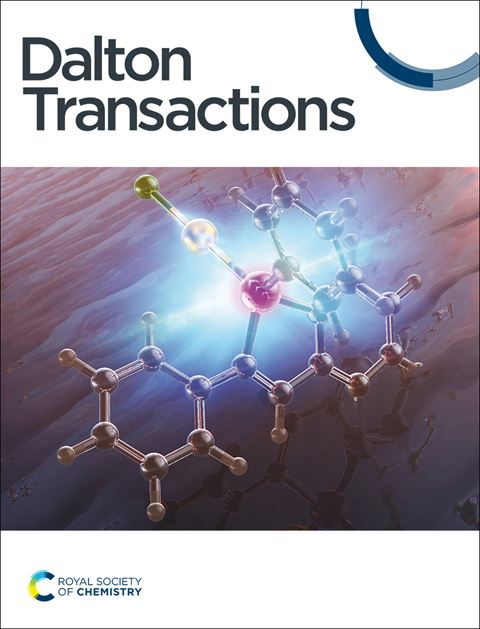二卤代-硫代氨基甲酸配体和混合配体 Ni(II) 配合物的合成、细胞毒性、结构特性及比较
IF 3.5
3区 化学
Q2 CHEMISTRY, INORGANIC & NUCLEAR
引用次数: 0
摘要
由 3,5-二卤代水杨醛-S-甲基异硫代氨基甲酮配体(3,5-二氯配体 I、3,5-二溴配体 II 和 3,5-二碘配体 III)和二乙醇胺合成了三种新型混合配体 Ni(II) 复合物。合成的化合物通过元素分析、傅立叶变换红外光谱、紫外可见光谱和 1H-NMR 光谱进行了表征。通过单晶 X 射线衍射技术确定了络合物 I 和络合物 II 的固态结构。研究发现,这两种复合物都具有扭曲的方形平面几何结构,其中偶氮甲基氮、苯酚氧、硫代氨基羰基配体的末端胺和二乙醇胺的胺氮配位。利用 MTT 法评估了配体和复合物对两种不同类型的癌细胞(THP-1 人白血病单核细胞系和 MDA-MB-231 侵袭性乳腺癌细胞系)和健康细胞(HUVEC 人脐静脉内皮细胞系)的细胞毒性作用。研究结果表明,与顺铂相比,氯代衍生物在针对单核白血病细胞系方面具有更好的疗效,同时对健康细胞的毒性也有所降低。本文章由计算机程序翻译,如有差异,请以英文原文为准。
Synthesis, Cytotoxicities, Structural Properties and Comparison of Dihalogenosubstituted-thiosemicarbazone ligands and Mixed-Ligand Ni(II) Complexes
Three novel mixed-ligand Ni(II) complexes were synthesized from 3,5-dihalogenosalicyladehyde-S-methyl isothiosemicarbazone ligand (3,5-dichloro for Complex I, 3,5-dibromo for Complex II, and 3,5-diiodo for Complex III) and diethanolamine. The synthesized compounds were characterized by elemental analysis, FT-IR, UV-Vis and 1H-NMR spectroscopies. Solid-state structures of Complex I and Complex II have been determined by single-crystal X-ray diffraction technique. Both the complexes were found to have distorted square planar geometry, with coordination of azomethine nitrogen, phenolate oxygen, terminal amine of thiosemicarbazone ligand and amine nitrogen of diethanolamine. The cytotoxic effects of the ligands and the complexes were evaluated against two different types of cancer cells (THP-1 human leukaemia monocytic cell line and MDA-MB-231 aggressive breast cancer cell line) and healthy cell (HUVEC Human umbilical vein endothelial cell line) by using MTT method. The findings demonstrated that the chloro-derivatives exhibited better efficacy compared to cisplatin in targeting the monocytic leukemia cell line while displaying reduced toxicity towards healthy cells.
求助全文
通过发布文献求助,成功后即可免费获取论文全文。
去求助
来源期刊

Dalton Transactions
化学-无机化学与核化学
CiteScore
6.60
自引率
7.50%
发文量
1832
审稿时长
1.5 months
期刊介绍:
Dalton Transactions is a journal for all areas of inorganic chemistry, which encompasses the organometallic, bioinorganic and materials chemistry of the elements, with applications including synthesis, catalysis, energy conversion/storage, electrical devices and medicine. Dalton Transactions welcomes high-quality, original submissions in all of these areas and more, where the advancement of knowledge in inorganic chemistry is significant.
 求助内容:
求助内容: 应助结果提醒方式:
应助结果提醒方式:


